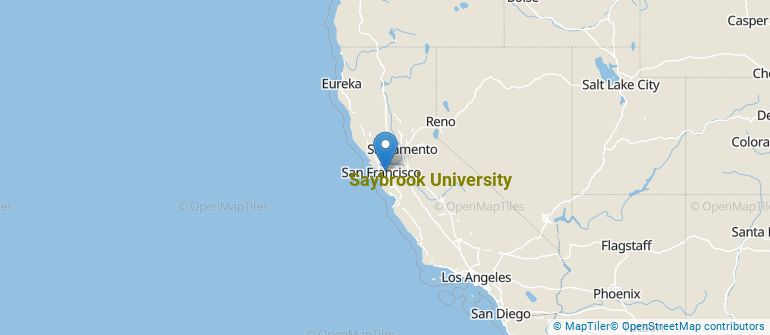 by our College Data Analytics Team
by our College Data Analytics TeamExplore the best ranked schools for the programs you are most interested in.
Saybrook University was not ranked in College Factual's 2025 Best Overall Colleges report. This could be for a number of reasons, including lack of data.
Data for the student to faculty ratio for this school has not been reported.
When estimating how much access students will have to their teachers, some people like to look at what percentage of faculty members are full time. This is because part-time teachers may not have as much time to spend on campus as their full-time counterparts.
The full-time faculty percentage at Saybrook University is 23%. This is lower than the national average of 47%.
Get more details about the location of Saybrook University.

Contact details for Saybrook University are given below.
| Contact Details | |
|---|---|
| Address: | 55 W Eureka Street, Pasadena, CA 91103 |
| Phone: | 626-316-5300 |
| Website: | https://www.saybrook.edu/ |
| Most Popular Majors | Bachelor’s Degrees | Average Salary of Graduates |
|---|---|---|
| Other Multi/Interdisciplinary Studies | 32 | NA |
| General Psychology | 22 | NA |
| Clinical, Counseling & Applied Psychology | 18 | NA |
| Human Resource Management | 6 | NA |
| Business Administration & Management | 5 | NA |
| Health & Physical Education | 0 | NA |
Online courses area a great option for busy, working students as well as for those who have scheduling conflicts and want to study on their own time. As time goes by, expect to see more and more online learning options become available.
In 2022-2023, 1,013 students took at least one online class at Saybrook University. This is an increase from the 915 students who took online classes the previous year.
| Year | Took at Least One Online Class | Took All Classes Online |
|---|---|---|
| 2022-2023 | 1,013 | 361 |
| 2021-2022 | 915 | 331 |
| 2020-2021 | 785 | 228 |
| 2018-2019 | 675 | 669 |
Footnotes
*The racial-ethnic minorities count is calculated by taking the total number of students and subtracting white students, international students, and students whose race/ethnicity was unknown. This number is then divided by the total number of students at the school to obtain the racial-ethnic minorities percentage.
References
More about our data sources and methodologies.